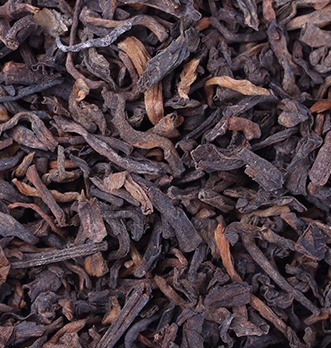
Originating from China, Pu Erh is a post-fermented tea renowned for its taste qualities and numerous benefits. Consumed for centuries, it is also known to improve over the years. As a tea enthusiast, would you like to understand how this variety is made? Origin, oxidation and fermentation, here are all the secrets of the elaboration of this traditional recipe.
The origin of Pu Erh tea
Pu Erh tea, produced in the Yunnan province of China, gets its name from Pu'er; the city where it originates. It is made from large tea leaves that grow naturally in this Chinese region.
As an anecdote, this drink began to spread in China from the 7th century. At the time, tea was even used as currency on the route connecting Yunnan to Tibet and Mongolia. Thus, to facilitate transport, it was compressed into bricks or even cakes. Between the 14th and 17th centuries, the Chinese emperor of the time banned these compressed teas. However, some producers continued to manufacture them.
It was from the 17th century that the tea produced in Yunnan became increasingly renowned and was named Pu Erh, referring to the area in which it was produced. Today, it is recognized as a high-quality post-fermented tea, whose taste and aromas improve with time.
Post-fermented tea: understanding this production method
Pu Erh is a black tea from China, obtained through a particular manufacturing process. Discover the different steps taken by producers to create this drink with an incomparable taste.
Tea oxidation
Pu Erh is made with large tea leaves growing mainly in Yunnan. Wild trees generally offer better quality in terms of taste. Some producers still use harvests from plantations.
Regardless of the cultivation method used, the manufacturing process of post-fermented tea remains the same. Between spring and autumn, the tea leaves are harvested and then dried until they undergo an oxidation process. Then, they are stored in piles in a warm and humid environment to induce a fermentation process.
The fermentation of black tea
Originally, Pu Erh was obtained through a slow fermentation process. Specifically, producers would store the tea in warm, humid places for months. This promoted the action of molds and bacteria to achieve the desired result; a post-fermented tea that could be preserved for years.
Since the 1970s, methods have evolved and manufacturers use a faster technique. The tea leaves are dried and then arranged in a pile which is then moistened and covered with a tarp. This process accelerates the fermentation phenomenon. The pile is regularly stirred to promote bacterial development. This prevents the bottom leaves from fermenting too quickly. After several weeks of storage in a warm and humid room, the tea changes color and turns black.
The aromas of Pu Erh tea
Post-fermented tea differs not only in its method of production, but also in its mouthfeel. The older it gets, the more its aromas change. After infusion, it takes on a red color and releases fruity or even woody notes. Sometimes, depending on the age of the Pu Erh, you might even find an earthy taste. This evolves over time and as it ages, its texture becomes softer and even mellow.